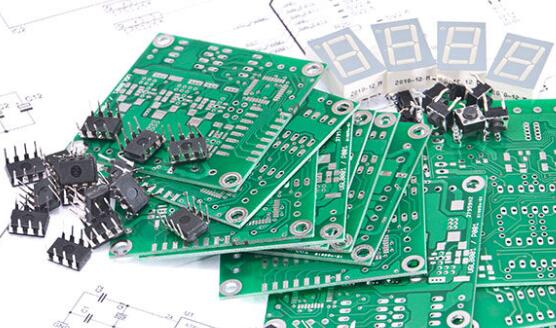low cost pcb assembly
Five strategies for low-cost PCB assembly

1.choosing the right materials is key to reducing costs
In modern electronics manufacturing, low-cost PCB assembly has become one of the goals pursued by enterprises. To achieve this, there are five strategies that can significantly reduce costs while maintaining product quality and performance. First, choosing the right materials is key to reducing costs. By choosing cost-effective materials, companies can reduce raw material expenditures without sacrificing quality. For example, using FR-4 materials instead of more expensive high-frequency materials can provide adequate performance in most applications while significantly reducing costs.
2.optimizing design is another important strategy
Through proper PCB layout and design, material waste and production complexity can be reduced. Designers should try to reduce excessive layers and complex wiring, which can not only reduce manufacturing costs but also improve production efficiency. In addition, the use of standardized design and modular design can further simplify the production process and reduce the need for customization, thereby reducing costs.
3.choosing the right manufacturer is also an effective way to reduce costs.
Working with experienced and well-equipped manufacturers ensures efficient and high-quality production processes. Manufacturers’ economies of scale and expertise can help companies obtain lower unit prices in mass production. At the same time, by establishing long-term cooperative relationships with manufacturers, you can get more price concessions and technical support.
4. mass production is another important strategy to reduce costs
Through mass production, companies can dilute fixed costs and reduce the production cost of each PCB. Mass production can also improve production efficiency and reduce production time and labor costs. In order to achieve this, enterprises should try their best to predict market demand, reasonably arrange production plans, and ensure the continuity and stability of production.
5.quality control is a critical aspect in ensuring low-cost PCB assembly
Through strict quality control measures, rework and scrap rates can be reduced, thereby reducing production costs. Enterprises should establish a complete quality management system and conduct regular quality inspections and tests to ensure that each PCB meets design requirements and quality standards.
By continuously improving the quality control process, product quality can be further improved and production losses reduced.
To sum up, low-cost PCB assembly can be achieved by selecting suitable materials, optimizing design, selecting the right manufacturer, mass production and strict quality control. These five strategies complement each other and work together to help companies stand out in the fierce market competition and gain greater profit margins and market share.
By continuously optimizing and improving these strategies, companies can achieve effective cost control while maintaining product quality.
GET PCB MANUFACTURING AND ASSEMBLY QUOTE NOW!
GET PCB AND ASSEMBLY SERVICE QUOTE NOW!
Best practices for low-cost PCB assembly.
In modern electronics manufacturing, low-cost PCB assembly has become a key strategy for companies to pursue efficient production and cost control. To achieve this, adopting best practices is crucial. First of all, choosing the right materials and suppliers is the basis for reducing costs. By establishing long-term relationships with reputable suppliers, you can obtain more competitive prices and stable material supply. In addition, using standardized components and materials also helps reduce procurement costs and inventory management complexity.
Next, optimizing the design is another important step in achieving low-cost PCB assembly. Design engineers should try to simplify the layout of the circuit board and reduce the number of layers and vias to reduce manufacturing difficulty and cost. At the same time, rationally arranging the location of components and avoiding too dense layout can improve production efficiency and yield. In addition, using modular design thinking to decompose complex circuits into multiple simple modules not only helps reduce design complexity, but also improves production flexibility and maintainability.

During the production process, choosing the appropriate assembly process and equipment is also the key to reducing costs.
Automated production lines and advanced assembly equipment can significantly improve production efficiency and reduce labor costs and error rates. At the same time, regular maintenance and calibration of equipment to ensure it is operating at its best can extend equipment life and reduce downtime and repair costs. In addition, by adopting the lean production concept and continuously improving and optimizing the production process, production efficiency can be further improved and costs reduced.
Quality control is an aspect that cannot be ignored in low-cost PCB assembly.
Through strict quality inspection and control measures, rework and scrap rates can be reduced, thereby reducing production costs. Establishing a sound quality management system and conducting regular internal audits and external certifications can ensure the stability and consistency of product quality. In addition, training employees to improve their quality awareness and operational skills is also an important means to ensure product quality.
Finally, supply chain management also plays an important role in low-cost PCB assembly.
By optimizing the supply chain and reducing intermediate links and logistics costs, the overall production cost can be significantly reduced. Establishing close cooperative relationships with suppliers and customers, and timely communication and coordination can improve the response speed and flexibility of the supply chain. In addition, the use of information management methods, such as ERP systems, can achieve transparency and efficient management of the supply chain, thereby further reducing costs.
To sum up, the realization of low-cost PCB assembly requires starting from many aspects such as material selection, design optimization, production process, quality control and supply chain management. By adopting these best practices, companies can not only effectively reduce production costs, but also improve product quality and market competitiveness.






